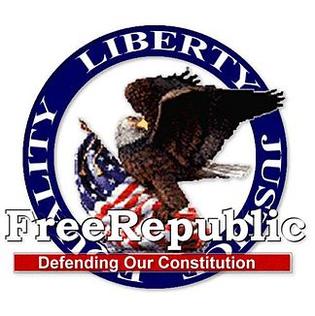Democrat lawmakers employ fear tactics claiming school choice will bankrupt their states. It’s a massive lie, and they know it. As a recent Wall Street Journal report notes, school choice programs provide enormous savings for a state’s budget — savings to the tune of millions of dollars each year.
Martin F. Lueken reports in the Journal that “a recent EdChoice analysis of 48 school-choice programs across 26 states through 2022 estimates that school-choice programs generated cumulative net fiscal benefits for taxpayers worth between $19.4 billion and $45.6 billion.”
Lueken continues, “Put another way, for every dollar spent on these programs, taxpayers have saved between $1.70 and $2.64 — a significant return on investment.” Indeed, school choice programs generate tremendous savings.
Public education spending has skyrocketed with no improvement in student learning. On average, across the nation, $17,280 is spent per year on each of the approximately 50 million K-12 public education students. The spending jumped from roughly $11,066 per student just 10 years ago — an astonishing 56 percent increase. New York state spending is a staggering $33,440 for each K-12 student, yet only 45 percent of third-grade students are proficient in reading. Regarding math achievement, only 42 percent of the state’s eighth-grade students scored proficient.
The National Assessment of Educational Progress exam administered to fourth-, eighth-, and 12th-grade students reveals that reading scores have declined for each tested grade level over the last 10 years.
More money spent on public education has proven not to increase student learning, yet public schools continually claim they are underfunded. However, on average, private schools spend more than $4,000 less per student and achieve better results.
Private schools must prove to student families the return on their financial investment of paid tuition by providing high-quality learning. If not, families may exit the school. However, in the absence of school choice programs, for the vast majority of families unable to afford private school tuition or homeschool, public education can hold children hostage in schools failing to provide quality academic learning or keep them safe.
The teachers unions leverage their political power with Democrat lawmakers to continue to increase public education funding void of academic accountability while also working relentlessly to maintain the public education near-monopoly.
Dating back to the prolonged public school closures, when parents had a front-row seat in their children’s classrooms, the lack of quality academic learning and far-left political indoctrination caused masses of parents to desperately desire an alternative education option for their children.
As a result, many Republican governors and legislators have listened and worked to advance widespread school choice, known as education freedom. In 2022, Arizona Republican Gov. Doug Ducey signed universal school choice into law in his state, allowing all families to use a portion of their child’s state education funding through an education savings account (ESA) to select the education option that will best serve their child. At that time, and continually since, now-Gov. Katie Hobbs, a Democrat, has claimed the program will “bankrupt the state.”
With the ESA, parents are eligible to allocate typically between $7,000 and $8,000 per child. In contrast, public education in Arizona receives over $12,000 per student each year from state and local taxes. Add in federal funding, and that number jumps.
Yet, in 2023, Hobbs declared that the school choice program could create a general fund shortfall of nearly $320 million. Far from that case, the year prior, which was the first year of the universal ESA program, Matt Beienburg of the Goldwater Institute reported that “the state of Arizona posted a $2 billion surplus.”
In August, Arizona Superintendent of Public Instruction Tom Horne said, “Having a surplus of more than $4 million is proof positive that the critics who have claimed the ESA program will bust not only the state’s education budget but the entire budget itself were always wrong. It was always a myth, and that myth is utterly demolished.”
If anyone should be against ESAs, it’s Horne due to his position over public instruction, but he understands the truth: Public schools are not meeting the needs of all students. When talking about a portion of state education funding going to parents to select the school that will best meet the needs of their unique children, Horne stated, “I don’t understand how anybody can be so heartless just to say the family can’t do that except that they are so immersed in ideology that they lose sight of what’s in the interest of the students.”
The bottom line is that when families receive an ESA, which is typically around half of the total the state spends per public education student, the state saves money. The more students participating in the program, the more money the state saves.
Universal school choice benefits parents, students, taxpayers, communities, employers of the future workforce, the state’s economy, and even students who remain in the public school — because when school choice is present in a community the learning of all students improves, even students who remain in their traditional public school due to the free-market principle of competition.
It is time for all states to employ universal education freedom. It is in the best interest of children and the state’s bottom line.
Dr. Keri D. Ingraham is a Senior Fellow at Discovery Institute, Director of the American Center for Transforming Education, and a Senior Fellow at Independent Women’s Forum.
Disclaimer: Opinions posted on Free Republic are those of the individual posters and do not necessarily represent the opinion of Free Republic or its management. All materials posted herein are protected by copyright law and the exemption for fair use of copyrighted works.

 By Free Republic | Created at 2024-10-22 15:34:43 | Updated at 2024-10-22 17:34:29
2 hours ago
By Free Republic | Created at 2024-10-22 15:34:43 | Updated at 2024-10-22 17:34:29
2 hours ago

